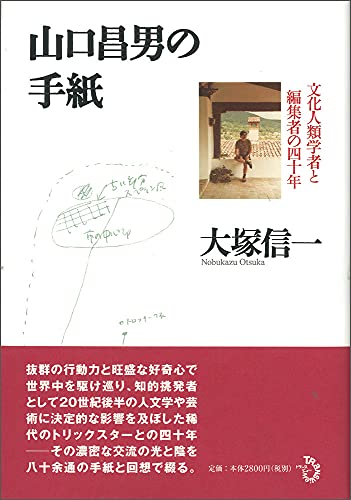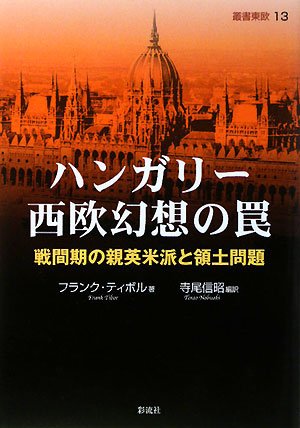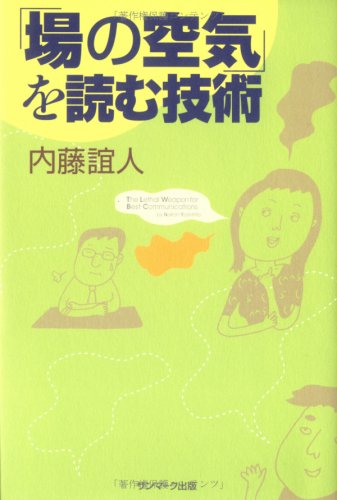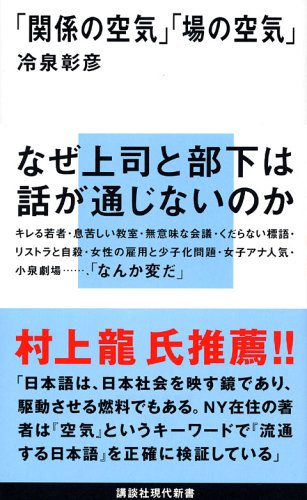1 0 0 0 OA ラシード・ウッディーンの『モンゴル史』:『集史』との関係について
- 著者
- 志茂 智子
- 出版者
- 東洋文庫
- 雑誌
- 東洋学報 = The Toyo Gakuho (ISSN:03869067)
- 巻号頁・発行日
- vol.76, no.3・4, pp.315-344, 1995-03
Early in the fourteenth century Il-Khan Ghazan ordered his vazir Rashīd al-Dīn to compile a history of the Mongols mainly based on original Mongolian sources. The khan’s intention was that such a history would make the Mongol tribesmen under him reacknowledge their old ties with the Chinggisid house, so that his rule would be firmly established over the Il-Khanid territory, which had long been embroiled in political turmoil. The Mongol History, titled Ta’rikh-i Ghāzāni, was completed after the death of Ghazan Khan and presented to his younger brother and successor Öljeitü Khan. Ordered by the new khan, Rashīd al-Dīn further undertook the task to compile a history of the world. Thus Jāmiʻ al-Tawārikh, or the Collection of Histories, consisting of the Mongol History and the History of Nations was completed in 1311. In the past it has been falsely assumed, with no serious examination, that the initial Mongol History, or Ta’rikh-i Ghāzāni, as identical with the Jāmiʻ al-Tawārikh edition. The assumption is quite wrong. In fact the Mongol History text contained in Jāmiʻ al-Tawārikh is a revised edition of Ta’rikh-i Ghāzāni. By comparison of the History of Tribes, which makes up the core of both editions of the Mongol History, we find that the later Jāmiʻ al-Tawārikh edition gives more refined phrasings with new words inserted and errors corrected, at the same time eliminating a large number of passages from the earlier edition. In this respect, the Jāmiʻ al-Tawārikh edition of the Mongol History is not quite as valuable a historical source as the Ta’rikh-i Ghāzāni edition.Almost all the extant manuscripts of the Mongol History have descended from the Jāmiʻ al-Tawārikh edition. Only the Manuscript Revan Köskü 1518 in lstanbul has come down to us preserving intact the original form of the Mongol History. This is truly the most valuable text, and should be taken as the primary source in studying the history of the Mongol Empire.The initial edition of the Mongol History had also contained Chinggisid family trees, which were excluded by Rashīd al-Dīn in his revised work in order to reduce the volume of the Mongol History, but retained in the Mongol Genealogies section in the Collection of Genealogies supplemental to Jāmiʻ al-Tawārikh.
- 著者
- 大塚 修
- 出版者
- 東京外国語大学アジア・アフリカ言語文化研究所
- 雑誌
- アジア・アフリカ言語文化研究 (ISSN:03872807)
- 巻号頁・発行日
- no.91, pp.41-61, 2016-03
1 0 0 0 IR <研究ノート>ラシードゥッディーンの著作活動に関する近年の研究動向
- 著者
- 岩武 昭男
- 出版者
- 西南アジア研究会
- 雑誌
- 西南アジア研究 (ISSN:09103708)
- 巻号頁・発行日
- no.40, pp.55-72, 1994-03-31
1 0 0 0 IR ラシ-ド・ウッディ-ンの「モンゴル史」--「集史」との関係について
- 著者
- 志茂 智子
- 出版者
- 東洋文庫
- 雑誌
- 東洋学報 (ISSN:03869067)
- 巻号頁・発行日
- vol.76, no.3, pp.p315-344, 1995-03
Early in the fourteenth century Il-Khan Ghazan ordered his vazir Rashīd al-Dīn to compile a history of the Mongols mainly based on original Mongolian sources. The khan's intention was that such a history would make the Mongol tribesmen under him reacknowledge their old ties with the Chinggisid house, so that his rule would be firmly established over the Il-Khanid territory, which had long been embroiled in political turmoil. The Mongol History, titled Ta'rikh-i Ghāzāni, was completed after the death of Ghazan Khan and presented to his younger brother and successor Öljeitü Khan. Ordered by the new khan, Rashīd al-Dīn further undertook the task to compile a history of the world. Thus Jāmiʻ al-Tawārikh, or the Collection of Histories, consisting of the Mongol History and the History of Nations was completed in 1311. In the past it has been falsely assumed, with no serious examination, that the initial Mongol History, or Ta'rikh-i Ghāzāni, as identical with the Jāmiʻ al-Tawārikh edition. The assumption is quite wrong. In fact the Mongol History text contained in Jāmiʻ al-Tawārikh is a revised edition of Ta'rikh-i Ghāzāni. By comparison of the History of Tribes, which makes up the core of both editions of the Mongol History, we find that the later Jāmiʻ al-Tawārikh edition gives more refined phrasings with new words inserted and errors corrected, at the same time eliminating a large number of passages from the earlier edition. In this respect, the Jāmiʻ al-Tawārikh edition of the Mongol History is not quite as valuable a historical source as the Ta'rikh-i Ghāzāni edition.Almost all the extant manuscripts of the Mongol History have descended from the Jāmiʻ al-Tawārikh edition. Only the Manuscript Revan Köskü 1518 in lstanbul has come down to us preserving intact the original form of the Mongol History. This is truly the most valuable text, and should be taken as the primary source in studying the history of the Mongol Empire.The initial edition of the Mongol History had also contained Chinggisid family trees, which were excluded by Rashīd al-Dīn in his revised work in order to reduce the volume of the Mongol History, but retained in the Mongol Genealogies section in the Collection of Genealogies supplemental to Jāmiʻ al-Tawārikh.
1 0 0 0 IR ラシード著作全集の編纂:『ワッサーフ史』著者自筆写本の記述より
- 著者
- 岩武 昭男
- 出版者
- 東洋文庫
- 雑誌
- 東洋学報 = The Toyo Gakuho (ISSN:03869067)
- 巻号頁・発行日
- vol.78, no.4, pp.498-528, 1997-03
Concerning the writings of Rashīd al-Dīn Faḍl-allāh Hamadānī, many scholars state that, according to Waṣṣāf, Jāmiʻ al-Tawārīkh was extended to 712. This is based on Quatremère's misreading of Waṣṣāf's text. In his autograph manuscript Tārīkh-i Waṣṣāf, Waṣṣāf clearly shows that the date is not that of the final completion of Jāmiʻ al-Tawārīkh, but of the compilation of Jāmiʻ al-Taṣānīf, 'the Collected Works' of Rashīd. While Waṣṣāf recorded a list of works composing it, a manuscript copied in 710 of Majmūʻa carries a different list of Jāmiʻ al-Taṣānīf al-Rashīdī. The latter list, which was edited by Quatremère, and which we know is also carried in some other manuscripts, has been assumed to be Rashīd's plan of writings, without correct reading of Waṣṣāf's text.Furthermore, in the two versions of the addendum to his endowment deed, Rashīd stipulates that his works should be copied every year in Arabic and Persia in accordance with the original edition. Its first version was confirmed, simultaneously with the endowment deed itself, by a qāḍī of Tabriz in Rabī' I 1, 709, while its second one was attested in Dhu'l-Ḥijja, 713. The former stipulates for making copies of four titles of his works (Majmūʻa, Āthār wa Aḥyā, Bayān al-Ḥaqā'iq and Jāmiʻ al-Tawārīkh), all of which are included in the list in Quatremère's edition. In the latter, two titles are added to the first four. Neither of the added ones is included in that list, but one of them, As'ila wa Ajwiba, is easily found in the list in Waṣṣāf's text.Accordingly, it must be recognized that the list of works in Quatremère's edition shows the contents of the first compilation of 'the Collected Works of Rashīd'. He made the first compilation of his collected works before 709, and stipulated for making copies of four titles of them in the addendum to his endowment deed. After he composed other works, he made the second compilation that was completed in 712, and then rewrote the addendum in 713, adding two titles of his works to be copied. The first compilation includes the translations from Chinese. But the second compilation omits them, and includes As'ila wa Ajwiba and a work contradicting metempsychosis, which we can assess as the other work added in the second version of the addendum, Taḥqīq al-Mabāḥith. The replacement of works tells us the gap between the ilkhanid government and the Yuan dynasty in China how deeply rooted Islam became in this period.
1 0 0 0 『集史』研究の現状と課題
- 著者
- 白岩 一彦
- 出版者
- 日本中東学会
- 雑誌
- 日本中東学会年報 (ISSN:09137858)
- 巻号頁・発行日
- vol.10, pp.179-198, 1995
1 0 0 0 「五族譜」と「集史」編纂
- 著者
- 赤坂 恒明
- 出版者
- 早稲田大学史学会
- 雑誌
- 史観 (ISSN:03869350)
- 巻号頁・発行日
- no.130, pp.p47-61, 1994-03
1 0 0 0 IR ラシードッディーン『集史』第1巻「モンゴル史」の諸写本に見られる脱落
- 著者
- 宇野 伸浩
- 出版者
- 広島修道大学
- 雑誌
- 人間環境学研究 (ISSN:13474324)
- 巻号頁・発行日
- vol.5, no.1, pp.95-113, 2006-09
1 0 0 0 OA ラシード・ウッディーン『歴史集成』現存写本目録
- 著者
- 白岩一彦
- 出版者
- 国立国会図書館
- 雑誌
- 参考書誌研究 (ISSN:18849997)
- 巻号頁・発行日
- no.53, 2000-10-02
1 0 0 0 IR 山口昌男教授--略歴と著作目録
- 出版者
- 東京外国語大学アジア・アフリカ言語文化研究所
- 雑誌
- アジア・アフリカ言語文化研究 (ISSN:03872807)
- 巻号頁・発行日
- no.46, pp.p491-540, 1994
1 0 0 0 山口昌男の手紙 : 文化人類学者と編集者の四十年
1 0 0 0 ハンガリー西欧幻想の罠 : 戦間期の親英米派と領土問題
- 著者
- フランク・ティボル著 寺尾信昭編訳
- 出版者
- 彩流社
- 巻号頁・発行日
- 2008
1 0 0 0 IR 三井高陽の対東欧文化事業 : ハンガリーのケースを中心に
- 著者
- 近藤 正憲
- 出版者
- 千葉大学大学院社会文化科学研究科
- 雑誌
- 千葉大学社会文化科学研究 (ISSN:13428403)
- 巻号頁・発行日
- no.2, pp.33-63, 1998-02-28
本稿においては三井高陽が1930年代後半から40年代初頭までに関わった文化交流事業の全体像を把握し、ハンガリーを中心として三井高陽という一人の日本人の対東欧認識と文化事業の実際を明らかにすることを目的とする。考察の範囲を地域としてハンガリーに限定する理由は対ハンガリー文化事業が三井の文化事業の中でもっとも早い時期のものに属すること、現地の日本研究に対する補助が長期的かつ計画的に行われたこと、また彼の文化事業に関する彼自身の発言がハンガリーに関して多く残されていること、更に後の日洪文化協定成立とも強い関連性が見られることがあげられる。
1 0 0 0 IR 日本的集団浅慮の研究・要約版
- 著者
- 阿部 孝太郎
- 出版者
- 小樽商科大学
- 雑誌
- 商學討究 (ISSN:04748638)
- 巻号頁・発行日
- vol.57, no.2, pp.73-84, 2006-12






